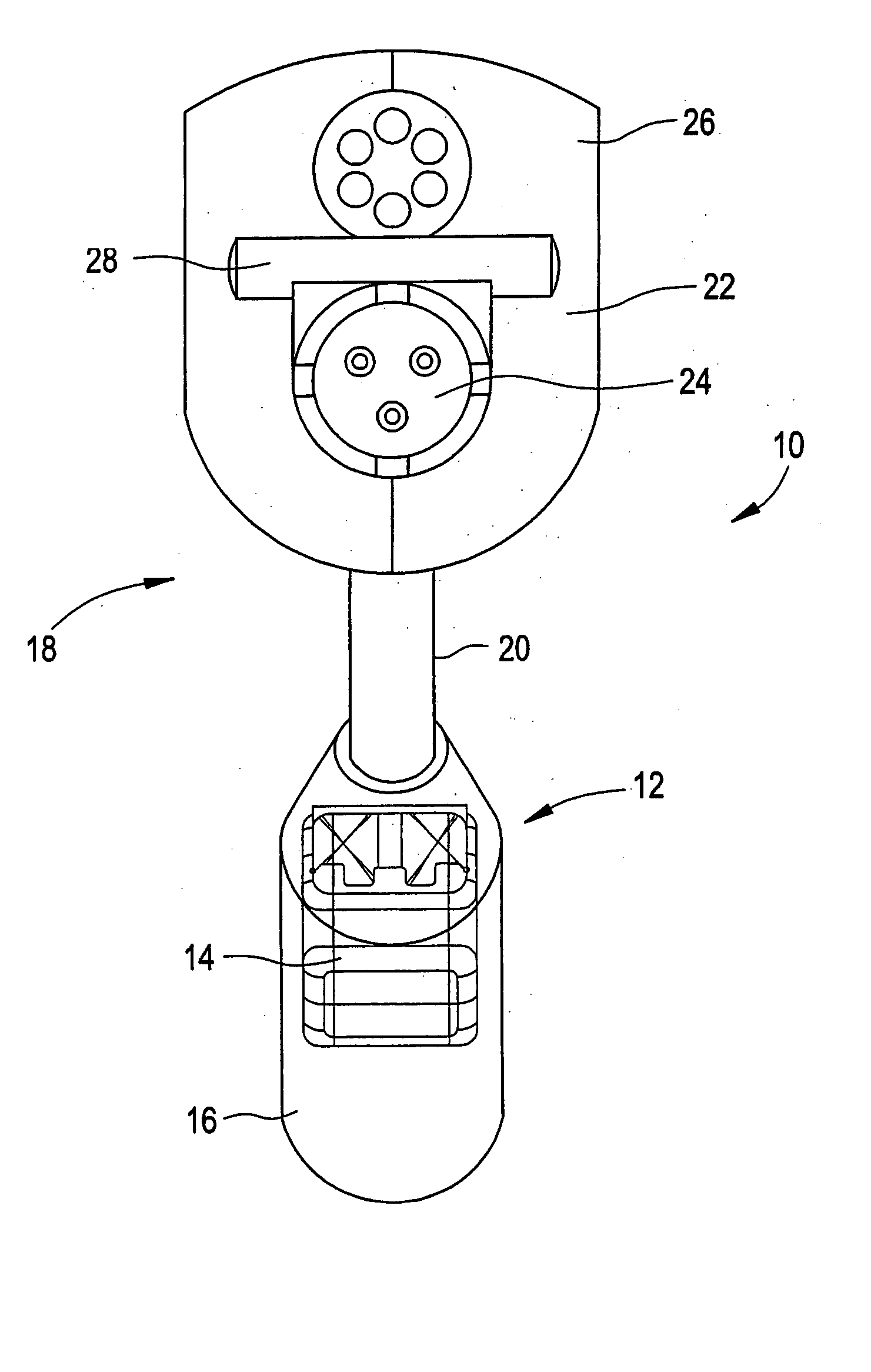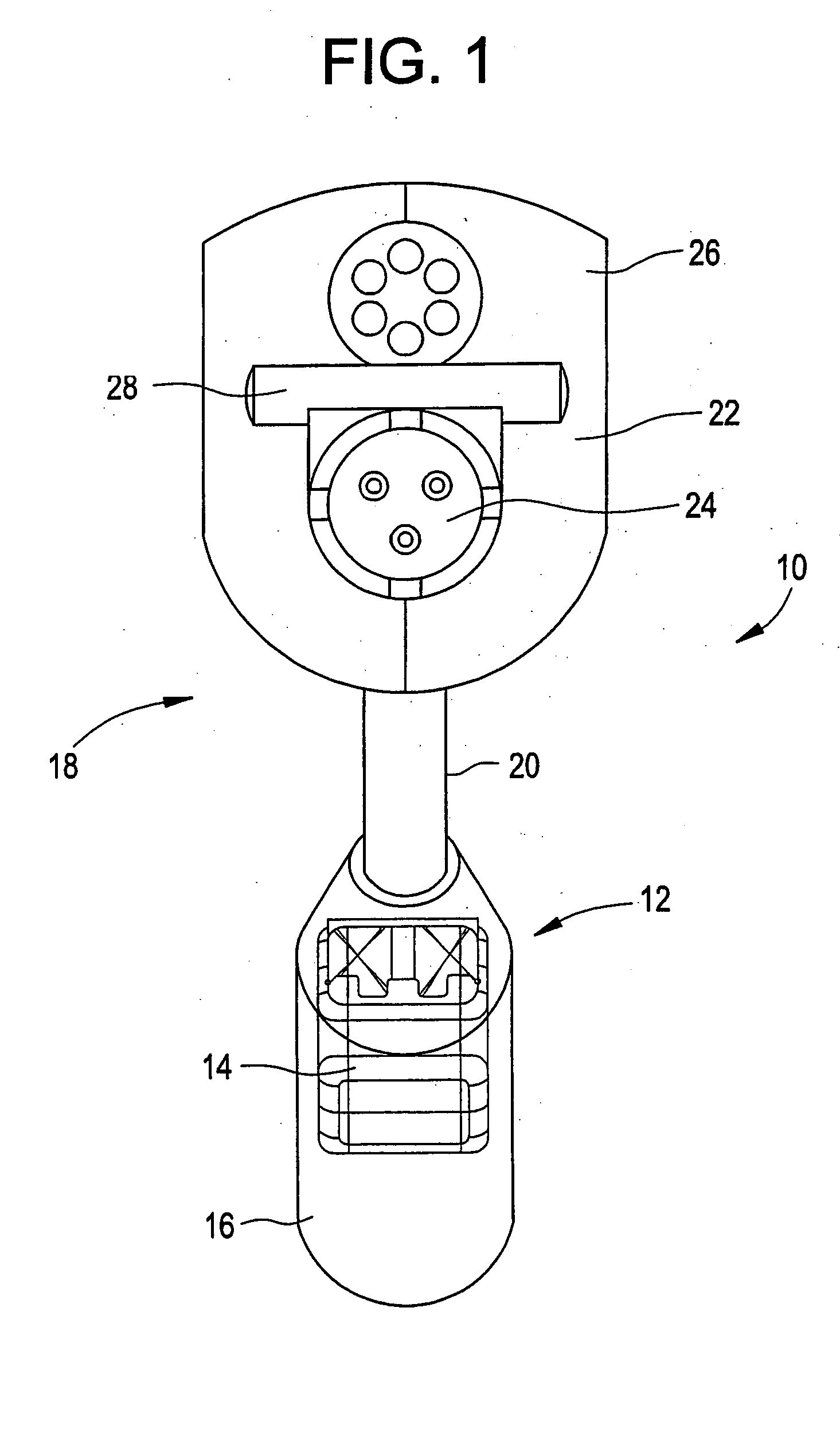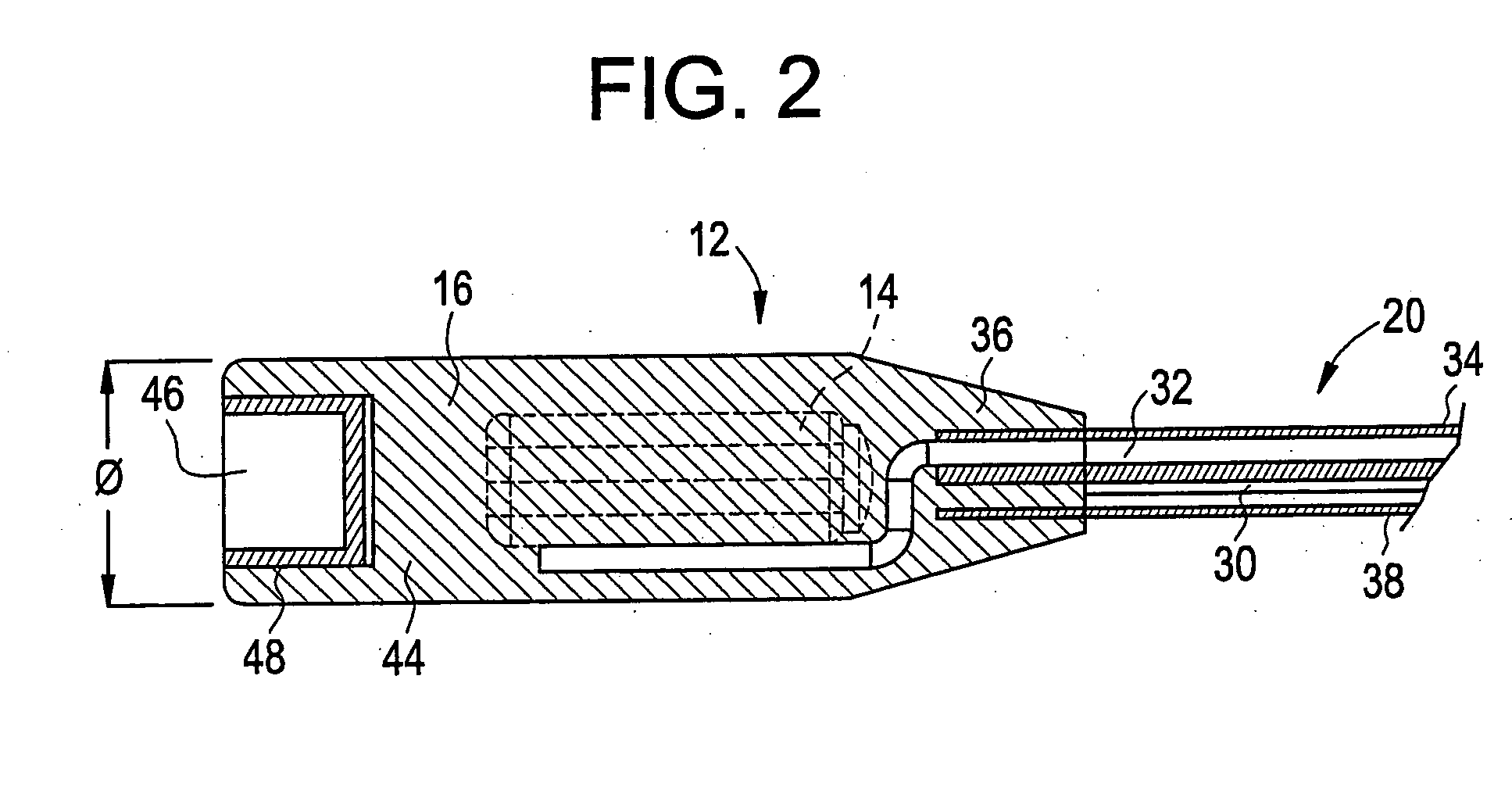Hearing aid system
- Summary
- Abstract
- Description
- Claims
- Application Information
AI Technical Summary
Benefits of technology
Problems solved by technology
Method used
Image
Examples
Embodiment Construction
[0025] Referring now to FIG. 1, an exemplary receiver and connection portion is illustrated generally at 10 for the presently described hearing aid system. In one exemplary embodiment, the hearing aid system is configured as a completely open canal (COC) system. With reference to FIG. 1, the illustrated exemplary receiver portion, shown generally at 12, includes a speaker 14 that is at least partially surrounded by a casing 16. The receiver portion 12 is attached to a connection portion, shown generally at 18, which includes an intermediate connecting portion 20 and a sound processing component connector 22. The sound processing unit connector 22 includes an electrical interface 24 configured to mate with a corresponding electrical interface (not illustrated) on the sound processing unit. The illustrated electrical interface 24 is a three-pin female interface, surrounded by a connector shell 26. While shell 26 is illustrated as a two part shell joined by lock pin 28, it should be re...
PUM
 Login to View More
Login to View More Abstract
Description
Claims
Application Information
 Login to View More
Login to View More - R&D
- Intellectual Property
- Life Sciences
- Materials
- Tech Scout
- Unparalleled Data Quality
- Higher Quality Content
- 60% Fewer Hallucinations
Browse by: Latest US Patents, China's latest patents, Technical Efficacy Thesaurus, Application Domain, Technology Topic, Popular Technical Reports.
© 2025 PatSnap. All rights reserved.Legal|Privacy policy|Modern Slavery Act Transparency Statement|Sitemap|About US| Contact US: help@patsnap.com



